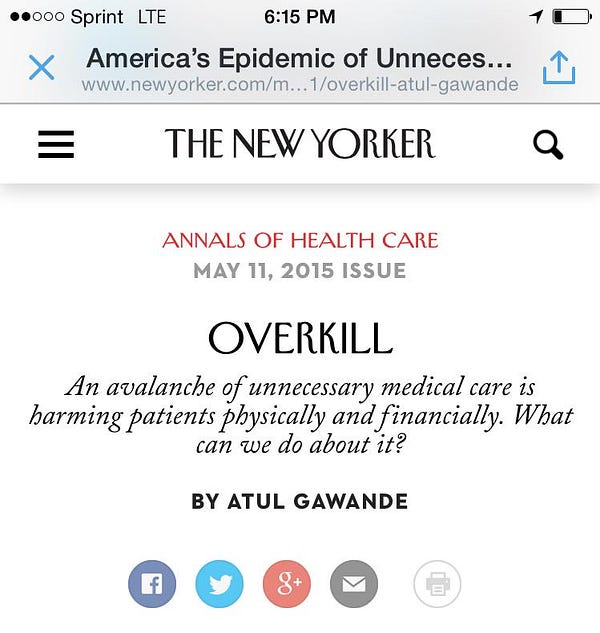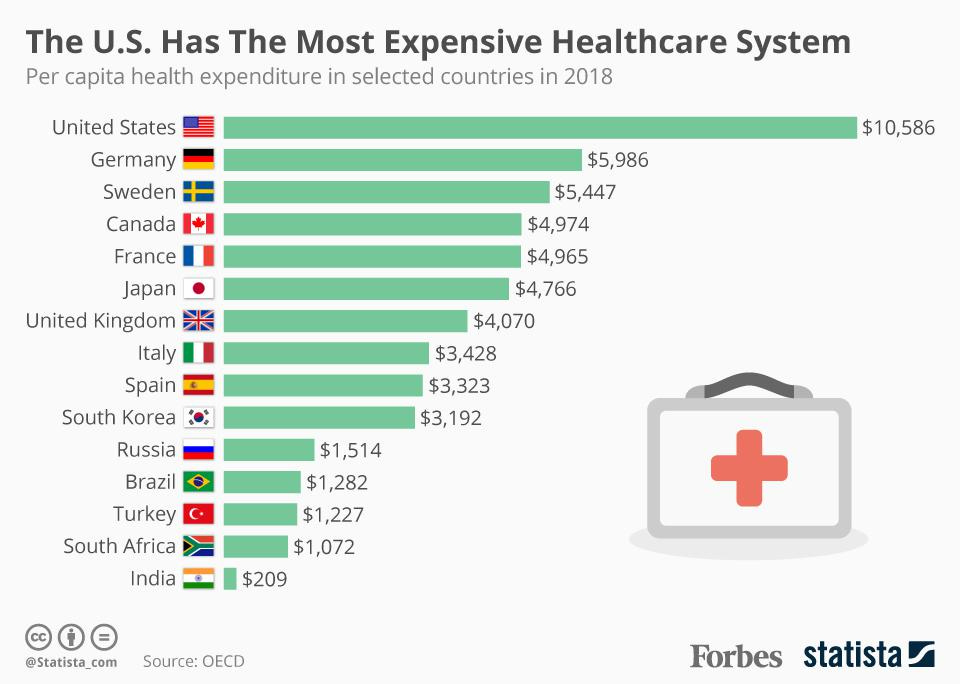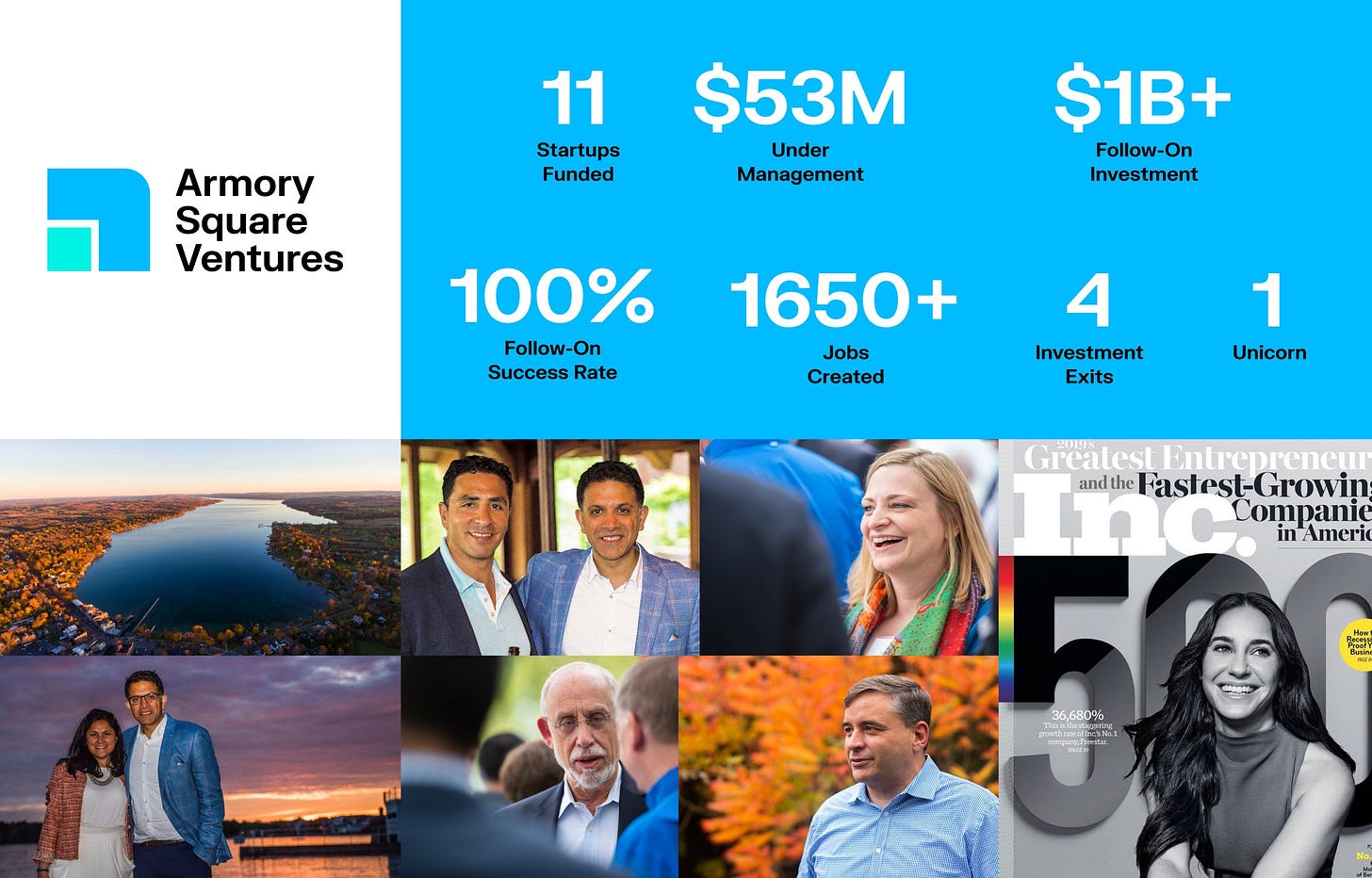An American abroad returns home to healthcare he doesn't recognize
America's healthcare system is broken
Sree’s newsletter is produced w/ Zach Peterson (@zachprague). Hard to believe but urine therapy is the latest anti-vaxxer cure. Here’s the fact-check journalists at Reuters were forced to put together. 🤦
🗞 TUNE IN: Our NYT Readalong guest this week is guest is Pulitzer Prize-winning journalist David Cay Johnson (@DavidCayJ). Watch this episode (Sunday, 8:30-10 am ET or recorded), and our archives, at http://readalong.link/youtubeplaylist. The Readalong is sponsored by Muck Rack. Interested in sponsorship opportunities? Email sree@digimentors.group and neil@digimentors.group.
📺 My Digimentors team is working with companies and nonprofits around the world to create virtual and hybrid events. We’ve worked on events for 50 people and 100,000. See our updated brochure. Please talk to us if you need events help or social media consulting (no project too small or too big): sree@digimentors.group.
***
AMERICA’S HEALTHCARE SYSTEM is more complex and expensive than any other rich country’s. That’s not news to anyone reading this newsletter, but it’s always interesting to see the shock of those who have seen the wonders of a functional public health system. Yes, our doctors, nurses, researchers and other medical staff have saved countless lives during the pandemic, but the system they operate in is broken.
My newsletter co-producer Zach is an American who lives in the Czech Republic but has been in the US for a few months. After a dozen years with socialized healthcare, his recent run-in with the U.S. system left him aghast.
From Zach:
My daughter (7) had a medical issue over the fall that required what ended up being a couple of visits to consultations with doctors, and a little more. She’s fine, and everything we did was worth it simply for peace of mind — but the system here is so completely barbaric that I just don’t know where to begin.
The thing that really strikes me is the whole idea of having to really consider the costs of what are very normal and regular “go to the doctor” things. In the Czech Republic, where you either have health insurance or the state pays for your health insurance, or you don’t live in the Czech Republic.
Most visits to see a doctor are free or close to it, and all of things we did for my daughter — all very much routine — would have cost us no more than $100 out of pocket, and likely all would have been free. This is, of course, fantastic and the way it’s done in all of Europe.
Here in the U.S., that certainly isn’t the case — but luckily the app for the provider we used (the only one we could possibly use where we are) has an “Estimates” section! In the end, we’ve spent thousands of dollars here for care that I’m sure a lot of people need, can’t afford, and don’t get.
After seeing the estimates and bills, I simply cannot imagine the sorts of conditions people in the U.S. just sort of…sit on…for no other reason than money — it’s insane! The Kaiser Family Foundation has so much on this, and it needs to be read in the context of most of these problems simply not existing in other wealthy countries.
I can’t emphasize this enough, my fellow Americans: Socialized healthcare is great, affordable, and would change your life immeasurably. It would mean the end of GoFundMe as a provider of last resort; it would mean insulin is affordable and available; and people under 45 could actually afford to have children!
Here in the U.S., we just sort of got used to insurance being tied to employment, deductibles, estimates, and the general labyrinthian nature of our system — it’s amazingly cruel, and its shortcomings (if not already blindingly clear) have only been exacerbated by the Covid19 pandemic.
This chart tells you all you need to know:
This is simply unconscionable. When people get sick, they should focus on how they can get better, not on if they’ll go bankrupt dealing with our awful system (62% of all bankruptcies are tied to medical bills; in 1980, the percentage was just 8%; by 2001 it was 50%).
Giving the last word to Dr. Atul Gawande (@atul_gawande), whose thoughtful pieces in The New Yorker always illuminate health topics. The 2015 tweet below is about how “millions of Americans get tests, drugs, and operations that won’t make them better, may cause harm, and cost billions.” In 2018, he teamed up with three of the biggest names in corporate America, Amazon, Berkshire Hathaway and JP Morgan, to tackle the healthcare crisis. Sadly, in 2021, they had to shut it down their entity, Haven. Gawande explained why the effort failed: “The vulnerability we have of tying your healthcare to your job, that remains still a big hill to climb, and the government has to solve it. This is a public core issue that we still have not faced up to.” If Gawande, Jeff Bezos, Warren Buffett and Jamie Dimon couldn’t fix it, then I am not holding out hope someone else could.



— Sree / Twitter | Instagram | LinkedIn | YouTube / Cameo
What is your experience with healthcare systems in America or abroad? Would love to hear your thoughts. And watch our Sept. 2021 #NYTReadalong episode with Jeanne Pinder, who runs ClearHealthCosts, a journalism company bringing transparency to health care costs.
A Word from Armory Square Ventures
If at times it feels like ASV began yesterday, we remind ourselves it has been eight years. Revitalizing smaller cities across New York State was a germ of an idea then.
Ever since, the thought has flourished and inspired more VCs and incubators to build, create and expand a vibrant, living, breathing hypothesis that tech entrepreneurs can successfully seed new companies + innovate in our region.
We could not be more grateful for the journey or impact.
Check out the milestones we recorded in 2021: bit.ly/3qD3R9K
Read Something
It’s notable that it is possible to get out of the QAnon/Trump vortex of lies and awfulness, but it’s not easy. Excellent reporting here by Brandy Zadrozny — who has covered this beat expertly for years.

@NewYorkBob’s Tech Tip: Xplora XGO2 Smartwatch Rewards Children for Staying Active
By Robert S. Anthony
Each week, veteran tech journalist Bob Anthony shares a tech tip you don’t want to miss. Follow him @newyorkbob.
There was a time when the only place a child could see a wrist-worn communication device in action was in the old Dick Tracy comic strips. The original device which debuted in 1946 had a small analog clock and a two-way radio, but by the 1980s our hero had been upgraded to a computerized model with a lie detector—no kidding.
Today, of course, smartwatches are everywhere tracking everything from blood pressure to heartbeats, and sometimes even the time, but one new smartwatch tries to encourage children to stay healthy by offering perks for keeping active.
The XGO2 smartwatch by Xplora Technologies, aimed at children from 4 to 10 years old, is part of an ecosystem which includes a mobile app and the GoPlay games and activities platform, which rewards children with “Xplora coins” based on the number of steps they take. The coins can be redeemed for access to online games and activities, some of which feature well-known cartoon characters like Tom and Jerry.
The XGO2 can make phone calls and exchange texts, but only with pre-approved contacts. It has a 1.4-inch color display, a built-in screen protector and a battery which lasts 72 hours, according to the company. A small camera allows children to take photos and videos but, here again, they can only share them with the pre-approved contacts.
Built-in GPS hardware lets parents track the location of their children on Google Maps and set boundaries. If the child strays outside of the set boundaries, parents get an immediate alert. A School Mode setting disables notifications during set hours, but GPS features stay on and calls can still be made to the watch, but without rings or vibrations.
The watch comes in four colors and carries an IP67 rating, which means it can stay under a meter (3.2 feet) of water for up to 30 minutes. The XGO2 is available from the Xplora website for $100 with an $11.99 per month pay-as-you-go service option, for $9.99 per month with a one-year contract or for $7.99 per month with a two-year plan.
Read Something Else
Nobody does deep political investigative reporting like Jane Mayer (seriously, read her book “Dark Money: The Hidden History of the Billionaires Behind the Rise of the Radical Right” if you haven’t already done so). Now, she’s on the Ginni Thomas thread, and wow — just shocking stuff.
Watch Something
It may not come through in this newsletter, but I’m a huge sports fan. I’m also a huge fan of independent media ventures that take off after starting in someone’s living room, garage or basement.
Enter, Jomboy Media.
Baseball heads already know Jim and Jake, and now Jomboy has become much more than breakdown videos on Facebook. Major kudos to everyone on their expansion — and if you apply for a job, let us know! They are hiring lots of content creators - “it doesn't have to be just baseball or sports.”
Odds & Ends
🩺 Be sure to check out our “She’s On Call” podcast, with surgeons Sujana Chandrasekhar, MD (@DrSujanaENT), and Marina Kurian, MD (@MarinaKurian) — watch the live show on YouTube, Facebook and Twitter.
🗞 TUNE IN: Our NYT Readalong guest this week is guest is Pulitzer Prize-winning journalist David Cay Johnson (@DavidCayJ). Watch this episode (Sunday, 8:30-10 am ET or recorded), and our archives, at http://readalong.link/youtubeplaylist. The Readalong is sponsored by Muck Rack. Interested in sponsorship opportunities? Email sree@digimentors.group and neil@digimentors.group.
👀 Did we miss anything? Make a mistake? Do you have an idea for anything we’re up to? Let’s collaborate! sree@sree.net and please connect w/ me: Twitter | Instagram | LinkedIn | YouTube / Cameo.












People used to say that urine was a cure for a jellyfish sting. Turns out that isn't true. Google it.